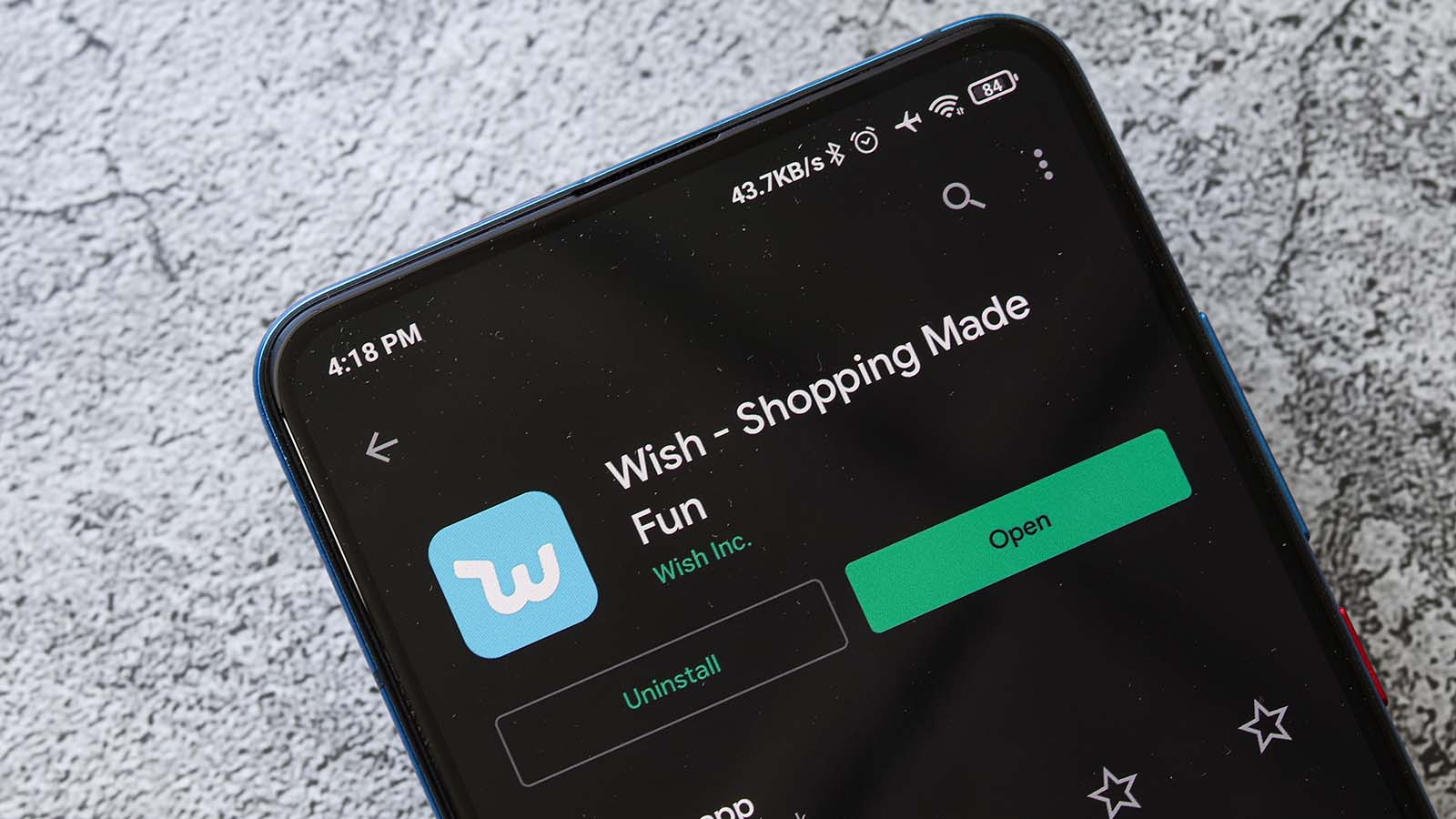When Wish parent ContextLogic (NASDAQ:WISH) stock had its IPO on Dec. 16, many expected shares to pop. Investors have been so starved for pandemic-proof investments that even weaker tech firms have managed 80% first-day gains. Imagine their surprise when Wish instead sagged 10% on opening day.

To me, that makes Wish’s busted IPO look more like Groupon (NASDAQ:GRPN) and Overstock.com (NASDAQ:OSTK) – companies that keep hanging on for dear life. So let’s keep swiping through the bargain bin; while it won’t die immediately, Wish stock won’t be the next Amazon (NASDAQ:AMZN).
Active Buyers Are Starting to Sag
At first glance, Wish looks like a no-brainer “buy.” The world’s No. 1 shopping app has seen monthly active users (MAUs) skyrocket 33% this year. Squint hard enough, and the company looks like it could be the next breakout e-commerce firm.
Peel back its Instagrammed facade, however, and an uglier truth emerges; while MAUs has grown swiftly, Wish’s active buyers have only ticked up 13%. In other words, even though Wish boasts a massive number of monthly app downloads, fewer people are actually buying anything.
And that’s starting to become a problem for investors.
The Most Instagrammable Flea Market
Wish sells cheap products in a beautiful setting. If you don’t mind wearing a “chronograph” (i.e., fancy watch) where some hands are painted onto the face, then it’s yours for $4. After all, even a broken clock is usually right twice a day.
The coronavirus pandemic also has supercharged Wish’s growth. The company’s proprietary product algorithms replace underperforming products with more tantalizing ones. The resulting arms race for beautified product photos couldn’t have come at a better moment for bored-at-home shoppers looking for entertainment.
But beautiful product photos only go so far. As a middleman, Wish sits in a precarious position between large Chinese suppliers and fussy customers.
- Slow fulfillment: the company doesn’t operate fulfillment centers, so most orders take anywhere from 15-45 days to deliver.
- Quality: the company tends to over-promise and under-deliver on products. “But hey, if it’s a $4 dress, can you really expect anything more?” writes one reviewer.
- Attention span: e-commerce apps have a shorter shelf-life than most; only 19% of uninstalled e-commerce apps are ever reinstalled, versus 40% on average.
These cracks have started to show. Despite its best efforts, Wish’s topline growth has slowed. In 2020, the company’s growth trailed the broader U.S. e-commerce market by 5%.
Dumpster-Diving for Deals
There’s good reason to worry about Wish’s prospects. While hawking cheap goods might win in the short run, many customers eventually get frustrated at low quality and lack of customer service. It’s the formula that doomed Groupon’s stock to the bargain bin.
Even before the coronavirus pandemic, Wish had already begun to see its core marketplace transactions slip. Despite a jump in logistics sales, core e-commerce revenues slipped 2%.
Wish has since announced plans to court local retailers to wring out more growth. But it’s going to be an uphill battle – few brands enjoy associating themselves with off-price channels. It’s why companies from high-end Burberry (OTCMKTS:BURBY) to mass-market H&M would rather destroy unsold goods than sell them to discounters. And it’s also why much of Wish’s so-called brand-name products are fakes.
Valuation Looks Full
At $18 billion, Wish stock looks fully valued. The company sports a 7.3x price-sales ratio, far higher than Amazon at 4.75x and eBay (NASDAQ:EBAY) at 3.3x. To justify its current price, Wish would have to grow as fast as Etsy (NASDAQ:ETSY) and reach its EBITDA profitability within two years. Neither seems likely to happen.
Could a rival buy Wish? Possibly. Many companies would pay a king’s ransom for Wish’s app footprint, customer data, and algorithms. But would they also want the millions of low-quality sellers that would come with it? Probably not.
That leaves precious few suitors that have an existing vendor network and are desperate enough to buy a third-party app instead of build one themselves. An obvious contender would be eBay. And Microsoft (NASDAQ:MSFT) has certainly tried stranger acquisitions before. But if you’re buying a fresh IPO in hopes it will get taken private, something is clearly amiss.
The Perils of Shorting WISH Stock
Don’t, however, short-sell WISH stock – for all its negative outlook, the company still has enough momentum to destroy would-be bears. ContextLogic has pivoted business before. And with 90 million active app users, Wish might find an inventive way to monetize its fan base. (Unboxing videos, anyone?)
Shorting WISH stock is much like going to the casino and putting your life savings on three-quarters of the roulette wheel. Mathematically, you’re likely to walk away with a decent gain. But if you lose, then it’s a long way down.
So instead, why not splurge on an $11 roulette drinking game. Not only will it [sic] “increase the drink tastes and create more atmosphere in the party.” But you’ll also get a better sense of what Wish is all about. Cheers!
On the date of publication, Tom Yeung did not have (either directly or indirectly) any positions in the securities mentioned in this article.
Tom Yeung, CFA, is a registered investment advisor on a mission to bring simplicity to the world of investing.
